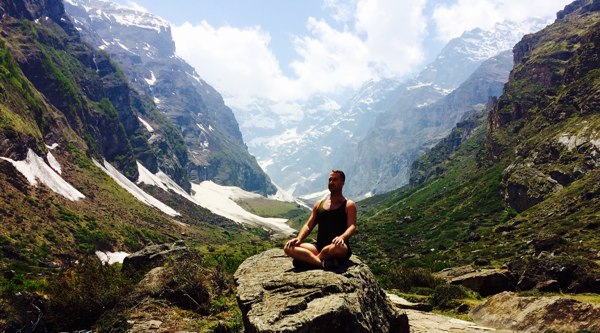Is your lower back constantly in pain?
Do you feel debilitated and sometimes can not move?
Do you often see a chiropractor for relief from back pain only to have the suffering return the next day?
I have some solutions for you, and I think they might change your life.
One of the solutions is to for you to stop stretching. Stop stretching your lower back?
It is possible that your lower back needs to be strengthened. You need to strengthen muscles such as your hip flexors and multifidas.
“My multifi-what?!?”
Don’t be discouraged if you don’t know where all these muscles are or what they are. Over time you can learn about them, but what is more important is that you get some relief from your pain and discomfort now.
Where should you start? Read the article below. It will help you understand why you are in so much pain. The article also gives you a take-home practice that you can start right now to become pain-free!
Therapy For The Lower Back
There are many reasons why your lower back is in pain. I can tell you from personal experience that while seeing a chiropractor day in and day out is probably helpful and gives you some relief, it will not be the cure until you address the source of the problems.
More than likely, one main source of your pain is related to your thighs, also known as the quads or quadriceps.
The thighs get so much use and yet they get so little attention. Whenever you are sitting, they are in a state of contraction. Whenever you are walking, jogging or running, your quads are important to help move the leg. Your thighs matter!
A few years ago I broke my leg. When I broke the femur in my left leg, I had to learn how to walk again and a big part of that recovery was in strengthening and stretching my left quad.
Trying to move your leg without a functioning quadricep is impossible.
Likewise, when the quads stop working properly or are in overdrive, they can hamper the entire movement on your body and cause a lot of “strain” on your back muscles. The thighs can debilitate the function of your lower back.
Pause for a moment and think about your anatomy.
If you are in a constant state of forward flexión (sitting down or hunched over) your quads/thighs are tightening and contracting. Likewise, when you are hunched over, as you are whenever you are sitting, your back is in a constant state of extension.
This consistent form and posture cause your body to function incorrectly. Your muscles stop working and shut down. All of your pelvic floor muscles shut down after 30 minutes of sitting and begin to atrophy. Sitting is literally killing us. Sitting literally takes years off your life.
When the muscles of your thighs and pelvic floor stops working, your body then recruits other muscles to do jobs they were not intended to do. When this happens, muscles that are recruited are then overworked. Now you are in pain, your back spasms, and then you ended up taking a lot of painkillers and muscle relaxants to correct a problem that will never be corrected until you address the source of your back pain.
One movement that counters the negative effects of sitting is to stretch your thighs. Stretching your thighs/quads correctly will greatly reduce tension in your lower back.
While you are already strengthening them in your workouts, in yoga poses such as warrior 1 and warrior 2, you are more than likely NOT stretching them enough.
Stretching your thighs is crucial in helping to free your lower back from the constant tension they are putting on your lower back.
And before we get too carried away, let’s just say there are A LOT of other things you need to be doing as well. But stretching your thighs is VERY important!
How To Do A Deep Thigh Stretch And Heal Your Lower Back Problems:
There are very few options. The are very few ways you can stretch the thighs.
It is worth noting that thigh stretches fall under the category of back bending.
Backbends tend to scare the hell out of some people. Whenever I tell my classes we will be doing backbends, I am always met with a lot of groans. However, once people begin to feel the energetic effects of backbends and learn how to practice them correctly, they always experience a resurgence of creative energy and feel more empowered in life.
To stretch your thighs, your basic option is what we often call a low lunge pose.
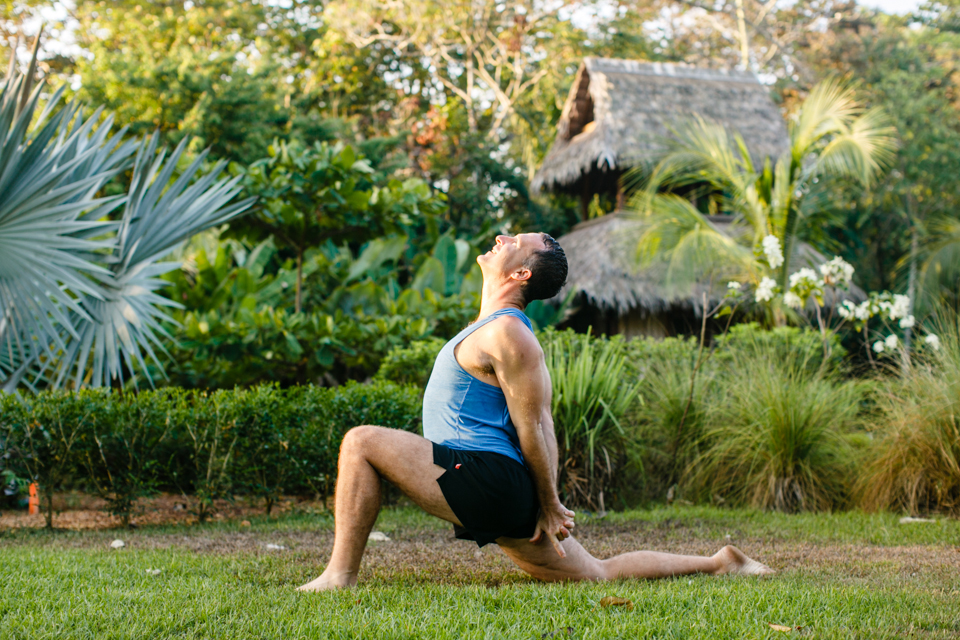
When practicing low lunge pose please work on these two things.
- Do not let your front knee pass over your ankle. The knee should always be no more than at a 90-degree angle.
- Sink your hips as close as you can to the floor.
How long should I stay here?
That is a good question. You should stay here for 30 seconds, and then again for one minute. Do each side for 30 seconds, and then do each side again for one minute.
Unless you are wanting to work more deeply in opening the myofacia, do not stay here longer. (And if you did not understand what I just said, do not stay here longer.)
The other pose is very similar to a lunge, but with one variation.
Ideally, you will find some sort of banister you can do this pose against. If you do not have a banister, then you can do this pose against the wall with some alternative variations.
For the purpose of this practice, I will assume you have a banister. If you do not have a banister, practice this against the wall and come up with your own creative solutions.
Step 1
Get all of the props that you will need:
- Yoga blanket or towel
- Yoga strap
- Two yoga blocks
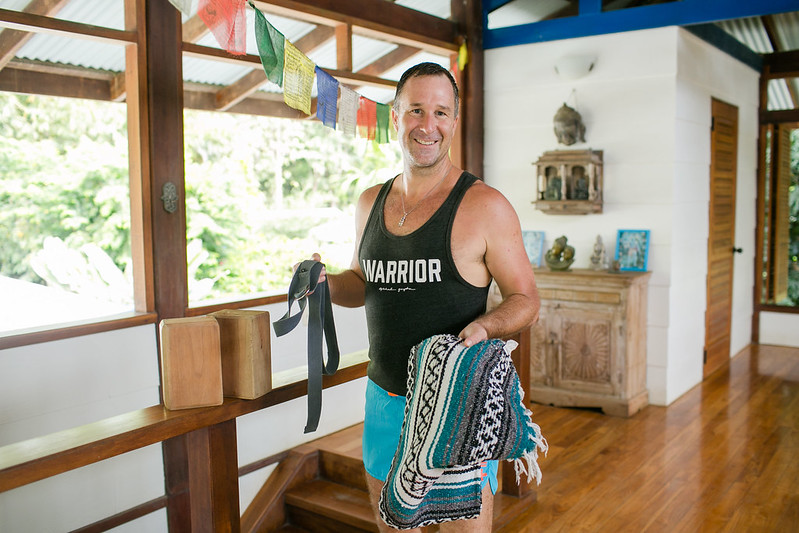
Step 2
Set up the blanket.
You want to fold the blanket four times and then place it against the banister.
What is the blanket for? You will place one of your knees on this blanket. The blanket provides some padding between your knee and the hard surface.
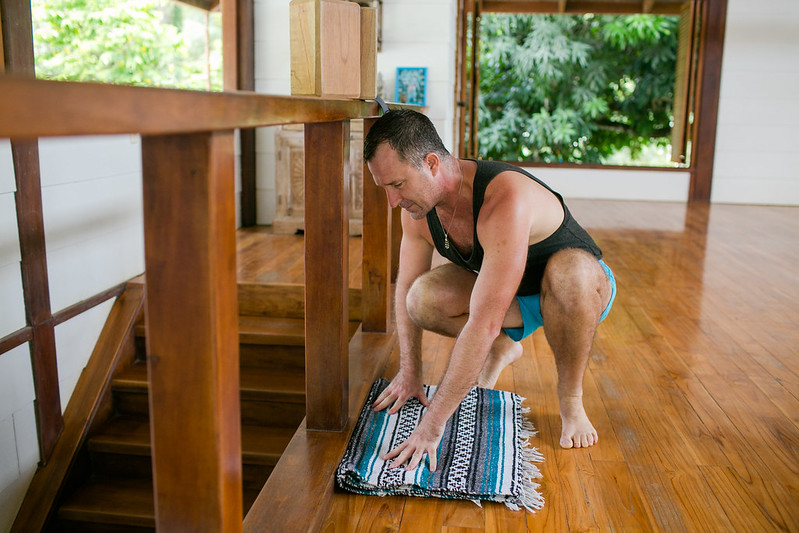
Step 3
Set up your strap. This only works if you are against a banister or have something to tie your strap to.
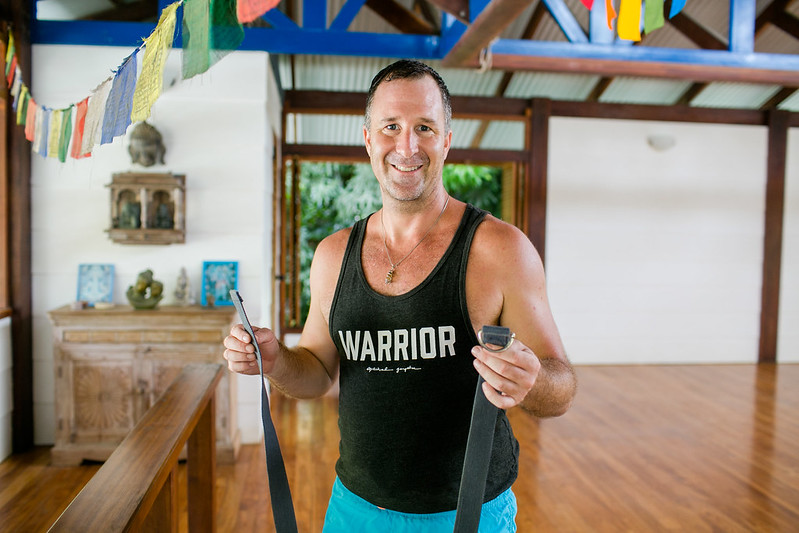
If you have a banister like we do, then loop your strap around the banister.
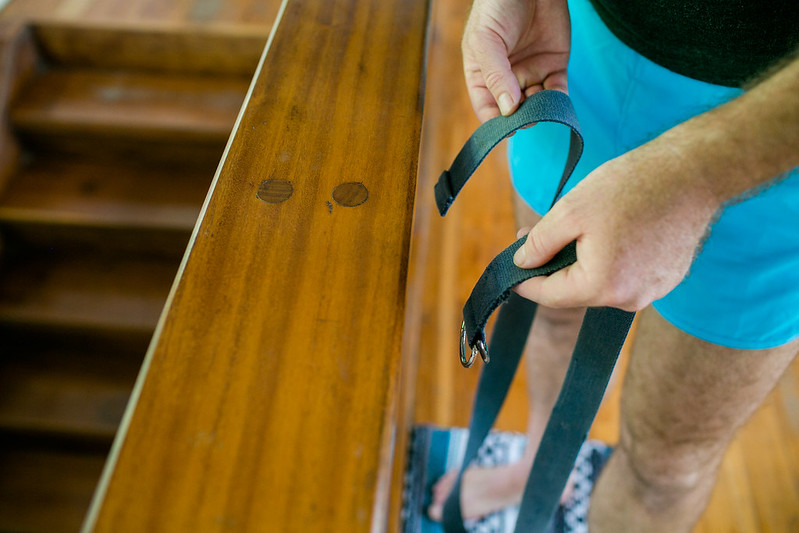
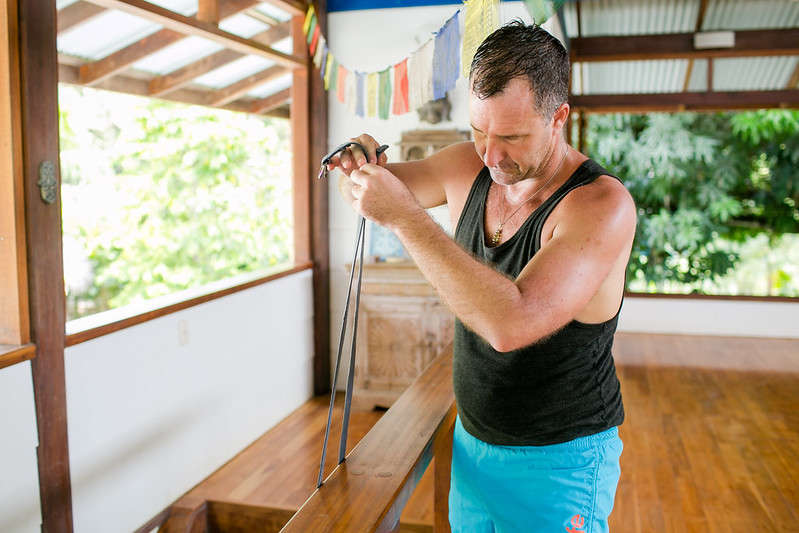
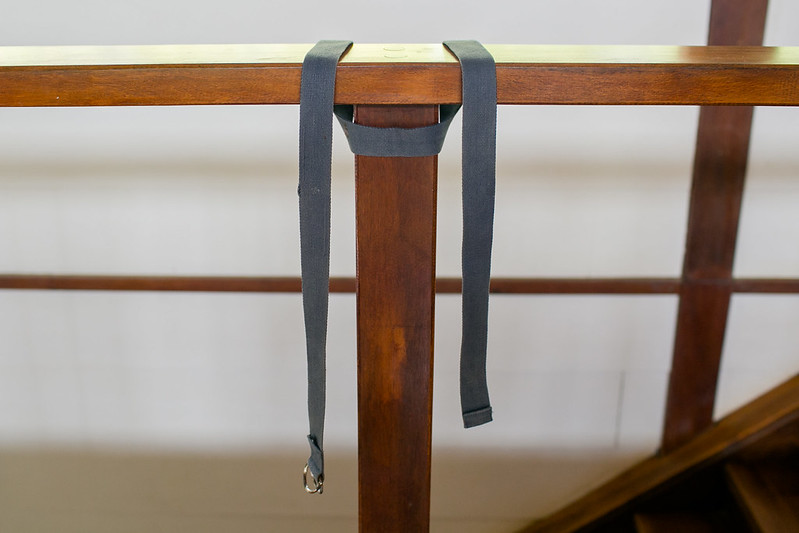
Step 4
Now set yourself up. Bring the knee of the leg/thigh you want to stretch as close as you can to the banister/wall on the blanket/towel you are using, and the shin/foot against the wall. The other foot comes forward. This pose will look like a modified lunge.
As you will see in the photo, I like to have my hands on blocks, to begin with.
It is really worth noting here that for some, you may not progress beyond this point for a long time. Some people’s thighs are so tight,t and it will take you some time to create some range of motion and to “open them up.”
When I was recovering from my broken leg, the thigh of my broken leg was in a state of contraction. This not only created havoc on my lower back, it took me almost a year to get it to relax. I consistently did this posture several times a week.
My suggestion is to stay here for a solid minute, and then work up to three. Repeat each side two or three times.
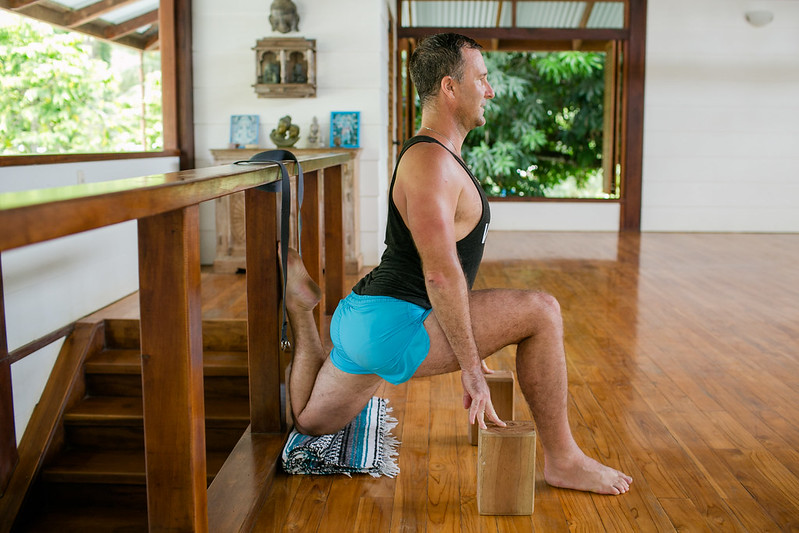
Step 5
Once you feel comfortable in Step 4, take your arms and wrap them around the banister. If you are doing this against the wall, lift your arms into a V and press them into the wall.
In either option, focus on lifting up through your sternum and breath into the top five ribs. See if you can slow your breathing rate down while breathing in for five counts and exhaling for five counts.
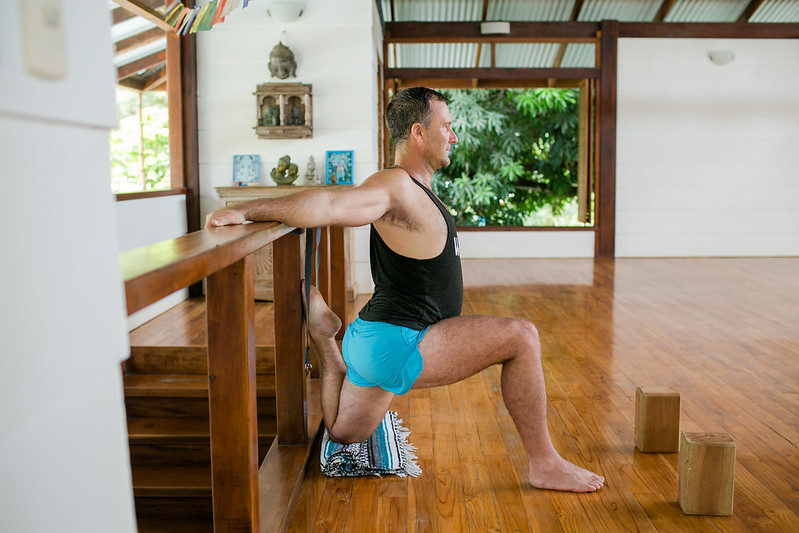
Step 6
Now is the final step. Staying in the pose, reach back with your hands and grab both ends of the strap. Take your hands over your head and walk the hands along the strap toward the banister. The flexible Gumby people might even be able to grab the banister in this position.
While you are grabbing the strap over your head, squeeze your elbows together not allowing them to splay outward.
Stay here as long as you can. Remember to slow your breathing rate down.
Breathe in for five counts, exhale for five counts.
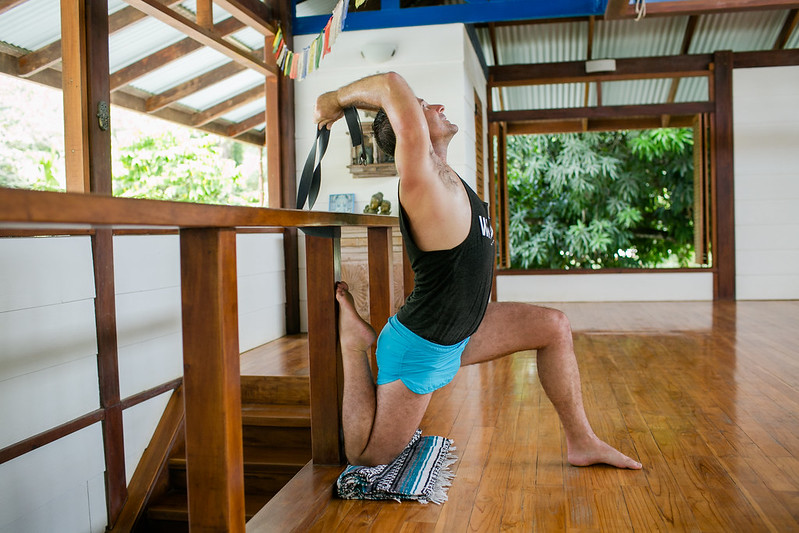
Backbending is never easy, but taking the time to do what is important is even more difficult. If you are having back issues or would like to prevent back issues from developing, please remember to spend some time on your thighs. Your body will be very happy and greatly appreciate the attention.

